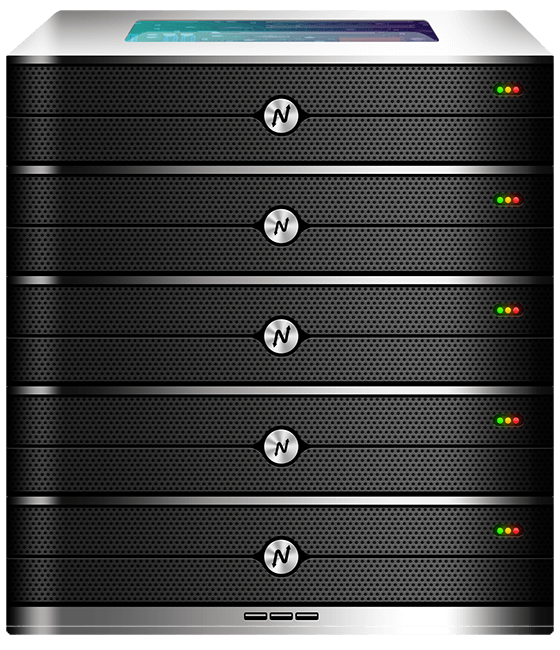Knowing how to check domain expiration date is a basic but critical task for any organization that runs a website. An expired domain can interrupt email, break customer access, and damage search rankings. For global businesses and B2B teams, monitoring domain lifecycles keeps brand continuity and revenue intact.
This guide explains simple, reliable ways to check domain expiration date, what those dates mean, and how to build processes that prevent accidental expiry. It also connects domain lifecycle management to hosting, DNS, and international operations—highlighting why Indian infrastructure and partners like XenaxCloud add value for businesses operating across Asia-Pacific and beyond.

Why checking your domain expiration date matters for global businesses
A domain expiry is not just a technical hiccup. For B2B companies it can mean lost leads, broken integrations, and compliance headaches. When you check domain expiration date proactively, you reduce operational risk and protect customer trust.
Globally, domain registries and resellers operate on different schedules and grace periods. That means if you manage domains across regions, you must centralize checks and renewals. Pairing domain monitoring with reliable hosting and DNS—such as services available at XenaxCloud’s Domains page—keeps your website and email resilient.
WHY INDIAN SERVERS ARE A SMART CHOICE — short explanation
Indian data centers deliver a strong value proposition for many global teams. They typically offer cost-effectiveness, lower latency across Asia, strong security and compliance frameworks, and scalable infrastructure. Combined with proactive domain monitoring, this makes a robust platform for businesses targeting Asia-Pacific customers.
Tools and methods to check domain expiration date
There are three practical ways to check your domain expiry: registrar dashboard, WHOIS lookup, and automated monitoring tools.
- Registrar dashboard — Log into the account with your domain registrar and view the registration details. This is the single most authoritative place to check domain expiration date because it reflects the registrar’s billing cycle and renewal status.
- WHOIS lookup — Use a WHOIS lookup to view the registry-level expiration date and contact details. WHOIS is useful for quick checks and for domains not hosted by your current registrar. Public WHOIS services show the expiration date field; if privacy protection is enabled, the expiration line still appears.
- Automated monitoring tools — Implement DNS and domain monitoring that alerts your team ahead of expiry. Tools can integrate with Slack, email, or ticketing systems so renewals never slip through. Enterprises should configure multiple reminders (90, 30, 7 days) and an escalation path.
Each method has trade-offs. Registrar dashboards are authoritative but require account access. WHOIS is fast and anonymous but can show outdated contact info. Monitoring tools automate reminders and are recommended for businesses that manage multiple domains.
Step-by-step: How to check domain expiration date using WHOIS
Checking via WHOIS is fast and helpful for audits. Follow these steps:
- Open a reliable WHOIS lookup (ICANN WHOIS or a trusted registrar’s WHOIS page).
- Enter the domain name and run the search.
- Read the record for the
Registry Expiry Dateor similarly labelled field—this is the date to track. - Verify registrar contact details and renew policy lines.
- If privacy protection hides registrar contact, confirm the registrar name and then log into the registrar portal to validate renewal settings.
Tip: Note both the registry expiry date and the registrar’s next billing date; sometimes auto-renewal may be disabled even when a grace period exists.
How to check domain expiration date for domains managed through hosting providers
If your domain is bundled with hosting, most control panels show domain status adjacent to hosting settings. For example, a company using XenaxCloud’s Domains management can view expiration and set auto-renew from a centralized dashboard. Integrating domain and hosting management reduces administrative overhead.
Steps in hosting control panel:
- Sign into your hosting account dashboard.
- Navigate to Domain Management or Domains.
- Locate the domain and view the expiration date and auto-renew options.
- Enable auto-renew or assign a billing contact with required payment credentials.
Keeping domain and hosting in a single account simplifies DNS changes and SSL renewals. If you prefer separation for security, maintain a documented process that maps each domain to its registrar and hosting provider.
How to choose the right monitoring and renewal strategy
For businesses, manual checks are risky. Pick a strategy based on scale:
- Single domain: Use registrar auto-renew and a calendar reminder.
- A few domains: Use a DNS/WHOIS monitor with email alerts and a shared calendar.
- Multiple domains (enterprise): Use an asset management tool that integrates WHOIS, DNS, SSL, and invoices, with role-based access, audit logs, and ticketing integrations.
Example: A marketing team managing brand domains should assign renewal responsibility to a single billing owner and a technical owner. The billing owner ensures payment methods are valid; the technical owner keeps DNS and TLS automation in place.
Speed, uptime, and security considerations tied to domain expiry
Domain expiration affects more than the website name. Expiry can break email deliverability, interrupt API certificates, and trigger search-engine drops. From a technical perspective, expired domains can cause:
- DNS propagation failures when registry records are suspended.
- TLS certificate revocation or failure to renew because ACME providers rely on domain control validation.
- Email outages due to MX record deactivation, impacting transactional communications.
Security best practices:
- Use registrar lock and two-factor authentication on registrar accounts.
- Enable auto-renew with backup payment methods and billing alerts.
- Maintain least-privilege access to domain accounts and log all changes.
Pairing domain management with robust hosting services ensures continued uptime. XenaxCloud’s managed services can be set up to coordinate DNS, SSL, and domain renewal reminders as part of an enterprise package.
Comparison: Indian servers and domain management vs foreign regions
Below is an objective comparison showing why Indian infrastructure and service models often suit businesses with Asia-Pacific focus. This table is technical and operational; it does not include pricing.
| Metric | India (Indian Data Centers) | US | Germany | UAE |
|---|---|---|---|---|
| Latency to Asia-Pacific | Low — optimized peering to APAC | High — longer path to APAC | Moderate — best for Europe | Moderate — good for Middle East |
| Support & Provisioning | 24/7, fast provisioning | 24/7 but regionally aligned | Business hours, high SLA | 24/7, localized support |
| Compliance & Data Residency | Local compliance options, flexible | Strong regulatory controls | Strong data protection laws | Localized compliance options |
| Scalability | High — cloud-native growth | High — broad global networks | High — enterprise-grade | High — regional hubs |
| Best for | Asia-Pacific traffic, cost efficiency | Americas target audiences | European users and GDPR needs | Middle East regional focus |
Indian infrastructure provides excellent connectivity to Australia and Southeast Asia, which matters when you check domain expiration date alongside DNS and hosting—fast updates and localized support reduce propagation time and risk.
Real-world use cases: domain expiry checks for businesses and developers
- SaaS companies — A SaaS provider uses automated domain and certificate monitoring to ensure tenant subdomains and custom domains renew smoothly. Checking domain expiration date is part of the onboarding checklist for each customer domain.
- Agencies and resellers — Web agencies managing dozens of client domains implement centralized WHOIS monitoring, set up auto-renew, and maintain ported billing to avoid client-facing outages.
- Ecommerce — Online stores map domain renewal to marketing calendars. An expired domain during a sale can translate into lost revenue, so automated checks are integrated with finance and operations.
- Enterprises — Large companies use asset management and SIEM integrations to log any domain ownership changes and track expiration dates for hundreds of domains, ensuring continuity for subdomains, APIs, and email routing.
These examples show that knowing how to check domain expiration date is not a one-time task but an operational discipline.
Why Indian servers and providers can handle global traffic and domain workflows
Indian data centers have matured rapidly. They provide regional peering, redundant backbone links, and compliance-ready facilities. For businesses that operate in Australia and Asia, using Indian infrastructure offers:
- Efficient DNS updates across regional networks, reducing propagation delays when you update records after checking domain expiration date.
- Proactive support for cross-border billing and renewal issues.
- Scalable resources that mirror global performance without unnecessarily complex vendor stacks.
XenaxCloud’s global connectivity and domain services help teams centralize domain renewal and DNS to reduce the manual overhead of expiry checks.
Scalability options and governance for domain portfolios
As your domain portfolio grows, you need governance:
- Centralized ownership mapping — a clear single source of truth showing which team owns which domain and billing contact.
- Automated renewals with fallbacks — primary and backup payment methods with grace period policies documented.
- Role-based access controls — prevent unauthorized transfers by enforcing registrar locks and MFA for account admins.
- Alerting and audit trails — keep logs for compliance and incident response.
For organizations scaling into APAC and Australia, pair this governance with hosting and DNS partners that support API-driven renewals and bulk operations. That reduces manual checks and allows your engineering teams to query expiry data programmatically.
Practical checklist: Monthly and quarterly domain health routine
Monthly:
- Run WHOIS audit for all owned domains and log expiry dates.
- Confirm billing contact and payment methods on registrar accounts.
- Verify DNS records and TLS certificate status.
Quarterly:
- Review domain portfolio for unused or expired domains eligible for consolidation.
- Check for unauthorized transfers or privacy changes.
- Validate auto-renew settings and invoice reconciliation.
Use this routine so checking your domain expiration date becomes a proactive habit rather than emergency patchwork.
How do I quickly check domain expiration date?
Use your registrar dashboard or run a WHOIS lookup and view the registry expiry field for the authoritative expiry date.
Can I renew a domain after it expires?
Often yes during the registrar’s grace or redemption periods, but recovery fees may apply and downtime is possible.
Does WHOIS always show the correct expiration?
WHOIS shows the registry expiry but you must verify the registrar’s billing and auto-renew settings for full accuracy.
How can I avoid accidental domain expiry?
Enable auto-renew, configure multiple payment methods, and set automated alerts at 90, 30, and 7 days before expiry.
Should domains and hosting be managed together?
It depends—combined management simplifies renewal and DNS, while separation can improve security; choose the model that fits your governance.
Conclusion — keep domains safe, avoid outages, and act now
Knowing how to check domain expiration date is a small process that protects major business outcomes. Regular WHOIS audits, registrar-based auto-renewal, and automated monitoring should be standard practice for any B2B organization.
Pair domain lifecycle management with resilient hosting, DNS, and security operations. XenaxCloud offers domain services and integrated hosting that simplify renewal workflows and reduce risk for businesses targeting Australia and Asia-Pacific. For centralized domain management, visit XenaxCloud’s Domains page to review options and enable automated renewals.
Protect your brand, maintain uptime, and reduce risk — start by checking your domain expiration date today and set up automated monitoring across your portfolio. Explore current service bundles and offers on the XenaxCloud Offers Page, and remember XenaxCloud provides reliable support to help you plan renewals and migrations with a 15-day money-back guarantee.
Recommended plan(s): If you’re consolidating domain and hosting for business sites, consider pairing domains with a hosting plan that matches your traffic—Shared Hosting Silver for single sites or KVM VPS 3 for enterprise-grade performance and control.
https://xenaxcloud.com/domain/
- 1 Website Host
- 15GB SSD Storage
- 100GB Bandwidth






